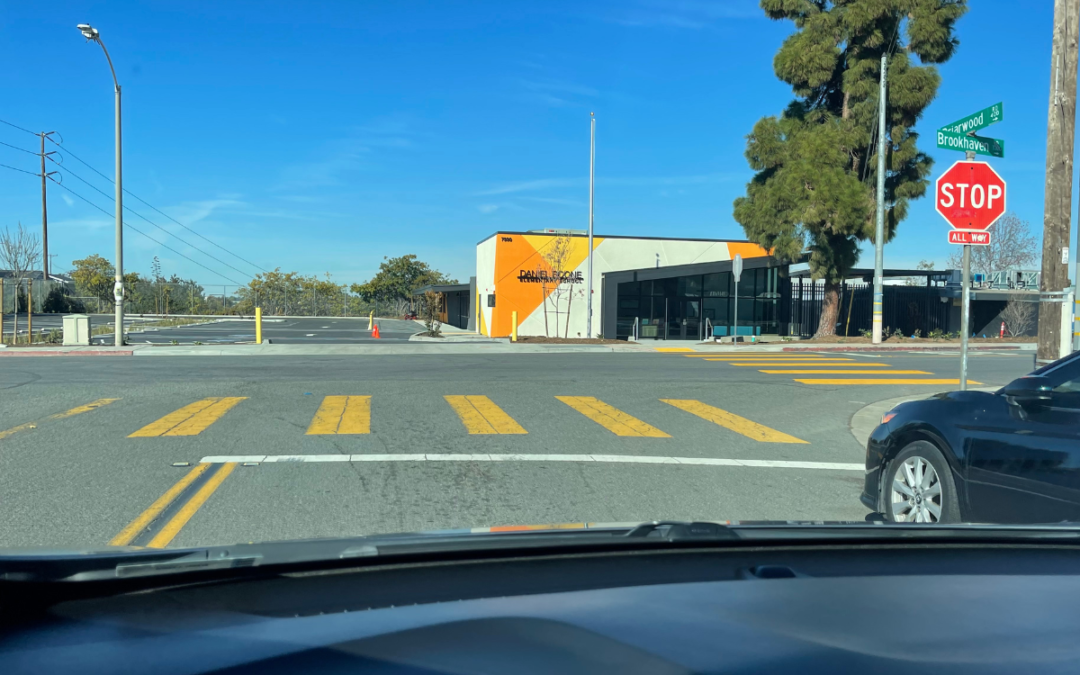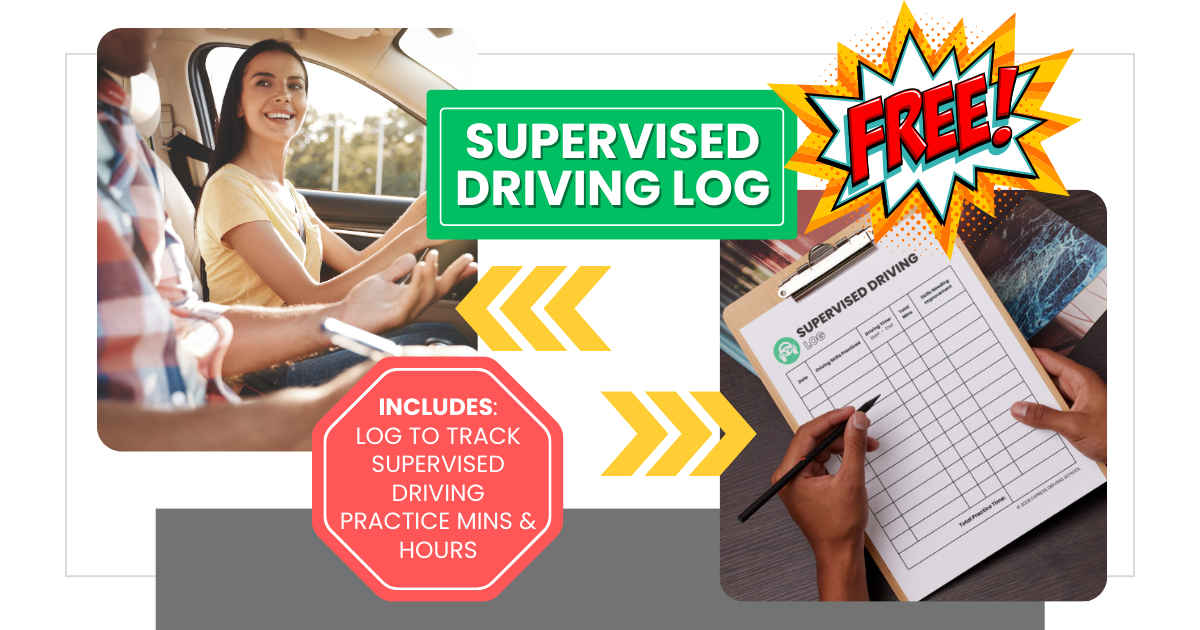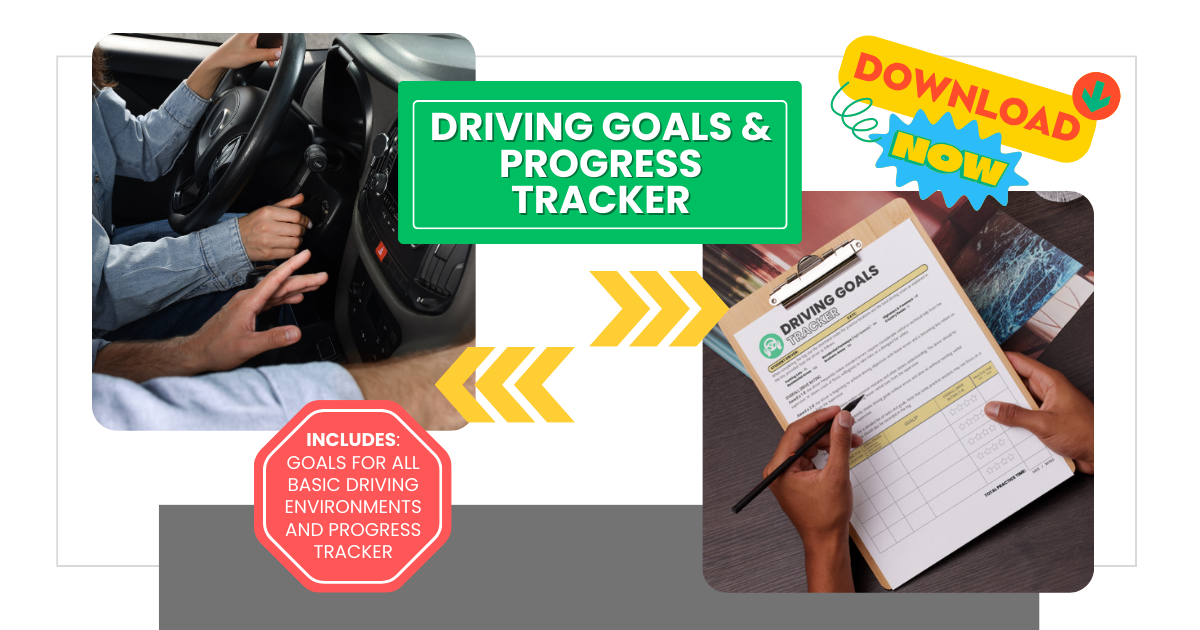Controlled Intersections | RESIDENTIAL AREAS
| Driving Lessons |
Navigating intersections, especially in residential areas, introduces a unique array of challenges for new drivers. Given the presence of traffic lights, stop signs, and diverse right-of-way scenarios, it becomes crucial for learners to cultivate the necessary skills to navigate these situations safely and with confidence. Consequently, this lesson is designed to guide new drivers through the intricacies of managing controlled intersections effectively, underlining the critical roles of preparation, practice, and patience throughout the learning process.
Goal
The new driver will safely manage intersections with traffic signals or road signs.
The Learning Environment
Look for a quiet residential neighborhood with very little traffic and few parked cars, pedestrians, lane markings, and intersections. Schedule practice during the day with dry pavement and no adverse weather.
Materials Needed
The Supervised Driving Log (Optional) – Although it was originally created for California Teens Learning to Drive, this FREE and COMPLEMENTARY driving log is an essential tool for all new drivers. Keeping a driving log is great for tracking how you’re doing, finding what you need to get better at, and feeling good about your wins. It helps you learn in an organized way, focusing on key skills to make you a better driver faster. This careful tracking builds confidence and speeds up your path to driving well.
Understanding Basic Traffic Laws and signals
Before hitting the road, it’s essential for new drivers to have a solid understanding of traffic signals and signs. A focused review session should cover how to approach and yield at intersections, particularly at 2-way stops, how to handle unprotected left turns, and the correct way to make right turns on red lights. Additionally, learners should be familiarized with scanning techniques to spot pedestrians, other vehicles, and potential hazards timely.
Activity Steps
Step 1: Commentary Drive Through Intersections
The first step involves a commentary drive led by an experienced driver—preferably a driving coach or a knowledgeable adult. During this drive, the coach will navigate through various intersections, verbalizing each action and observation. This includes explaining when to slow down, how to scan for hazards, and the thought process behind each decision made at an intersection. This approach helps demystify the process for the learner and provides a clear example of safe driving practices.
Step 2: Practice with the New Driver
After observing and listening to the commentary drive, it’s time for the new driver to take the wheel. Under the guidance of their coach, they should practice:
- Applying Good Scanning Technique: Constantly looking for pedestrians, other vehicles, and hazards from all directions.
- Slowing Down Appropriately: Reducing speed well before reaching the intersection to have ample time to observe and react.
- Obeying the Rules of Right-of-Way: Understanding and applying the rules of who has the right to go first to avoid confusion and potential accidents.
- Turning into the Legal Lane: Making sure to turn from the correct lane into the correct lane, following traffic laws and signals.
The Role of the Driving Coach
It’s important to remember that managing intersections can be overwhelming for new drivers. In the initial stages, the driving coach will need to play an active role in helping with yielding and decision-making. Through patient guidance and constructive feedback, coaches can help new drivers build their confidence and skills.
Common Errors to Avoid
New drivers often make a few common mistakes when dealing with controlled intersections:
-
- Failing to Scan for Hazards: One of the most critical mistakes is not thoroughly checking for pedestrians, cyclists, and other vehicles before proceeding through an intersection.
- Not Slowing Down in Time: Approaching an intersection too quickly can limit a driver’s ability to react to changing traffic lights or unexpected hazards.
- Incorrect Lane Usage: Turning from or into the wrong lane can lead to traffic violations and accidents.
Signs of Progress
A clear indication that a new driver is mastering the art of navigating intersections is their ability to manage these areas safely, recognizing and reacting to potential hazards efficiently. This proficiency comes from a combination of knowledge, observation, and practice.
Use a progress tracker to keep track of skills that have been mastered and those that still need practice or improvement. Express Driving School proudly offers a Driving Skills and Goals Progress Tracker to help student drivers and their driving coaches with assessments and evaluations by providing a rating scale that is simple and easy to use.
Controlled Intersections | RESIDENTIAL AREAS
Mastering the skill of making turns in residential areas is essential for safeguarding the well-being of both the driver and nearby pedestrians. Firstly, by adopting a systematic approach—such as signaling intentions, meticulously checking mirrors and blind spots, decelerating at the right moments, and executing turns with precision—drivers are empowered to traverse these areas with increased confidence. Moreover, engaging in regular practice, while simultaneously enhancing awareness and strictly adhering to right-of-way rules, will not merely elevate driving skills but also significantly enhance the safety of the driving environment for all. It’s important to underscore that the secret to proficient driving rests in paying attention to the minutiae; thus, mastering the fundamentals of turning is an indispensable step on the path to becoming a skilled and conscientious driver.
Drive with Confidence!
Keep up with all the latest driving news. Expolre our blog packed with essential tips and expert advice on all things related to DRIVING!






